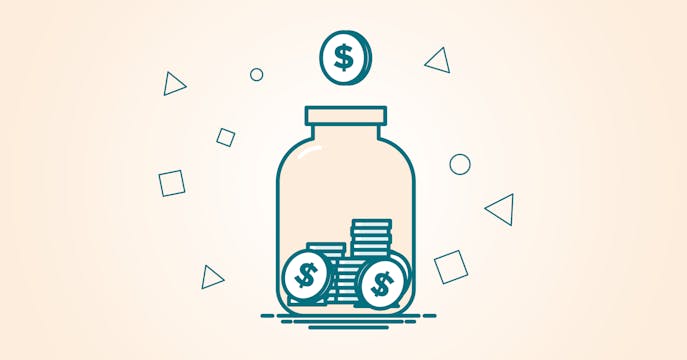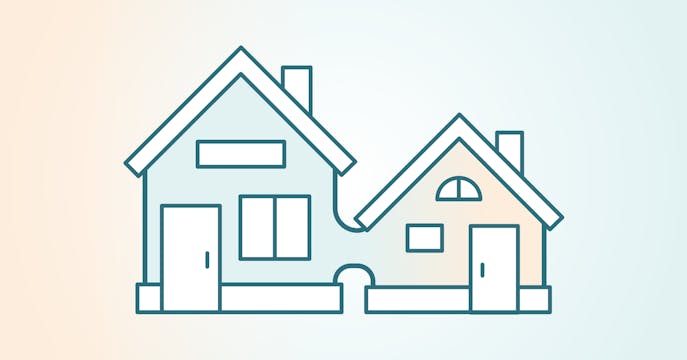Lowest Mortgage Rate in Canada. Starting from 2.49%
Which payment frequency should you choose?
Monthly mortgage payments are standard — but choosing another option can shave time off your mortgage and thousands from your interest costs.
But should you? Or can you? In 20 years, when your hindsight is 20-20, you may wish you had.
Like to go fast? Accelerate your payments to save more.
Here are the 6 different payment types available (assuming your mortgage fine print agrees): Monthly, Semi-Monthly, Biweekly, Biweekly Accelerated, Weekly and Weekly Accelerated.
Check out the example scenarios below. You'll see how a more frequent or accelerated schedule can save you cash and pay off your mortgage faster.
Please note: The below examples are illustrations only. There may be minor differences in payment and savings calculations due to differing compounding calculators between lenders. Amounts are rounded. Please contact your expert True North Mortgage broker for your exact payment and savings numbers based on your best rate.
Monthly is the most common payment frequency. Lenders use this standard payment to calculate the amount you would pay on other schedules.
In the example above, you'll pay $2,908 once per month for your 5-year term. If your interest rate stays the same, it will take the full 25 years to pay off your mortgage.
Interest paid for first 5-year term: $117,019
Total interest paid: $372,410
Semi-Monthly means you'll divide the monthly payment into 2, and pay that amount twice a month (i.e. the 1st and the 15th).
In the example above, your payment amount is $1,454 twice monthly for your 5-year term. If your interest rate stays the same, it will take almost 25 years to pay off your mortgage.
Interest paid for first 5-year term: $116,840
Total interest paid: $371,510
Savings compared to monthly: $900
Biweekly means you're paying 26 payments yearly, once every 2 weeks. For 3 months each year (usually), you'll need to make 3 payments in a month.
In the example above, your payment amount is $1,342 every 2 weeks. If your interest rate stays the same, it will take a little less than 25 years to pay off your mortgage.
Interest paid for first 5-year term: $116,800
Total interest paid: $371,440
Savings compared to monthly: $970
Biweekly Accelerated means you're paying 26 payments each year, with an extra monthly payment added into the calculation and spread out over the year's payments. For 3 months each year (usually), you'll need to make 3 payments in a month.
In the example above, your payment amount is $1,454 every 2 weeks. If your interest rate stays the same, it will take only 21.5 years to pay off your mortgage.
Interest paid for first 5-year term: $114,860
5-year savings compared to monthly: $2160
Total interest paid: $311,970
Savings compared to monthly: Over $60,400!
Weekly means you're paying 52 payments each year, which is once a week.
In the example above, your payment amount is $671 every week. If your interest rate stays the same, it will take less than 25 years to pay off your mortgage.
Interest paid for first 5-year term: $116,710
Total interest paid: $371,030
Savings compared to monthly: $1,380
Weekly Accelerated means you're paying 52 payments each year with an extra monthly payment added into the calculation and spread out over the year's payments.
In the example above, your payment amount is $727 every week. If your interest rate stays the same, it will take a little less than 21.5 years to pay off your mortgage.
Interest paid for first 5-year term: $114,760
5-year savings compared to monthly: $2,260
Total interest paid: $311,280
Savings compared to monthly: Over $61,100!
What is a mortgage payment?
A mortgage payment is a blend of interest and principal designed to be paid on a regular schedule to pay off your loan over a period of time (your amortization), usually 25 years.
In the beginning, most of your payment goes towards interest because your principal is at the maximum amount. As the years go by, your principal is paid down and gets smaller. By the time your 25th year comes around, most of your payment is principal instead of interest.
Why does increasing your payment frequency save you interest?
Time is the engine that fires up your mortgage-interest charges. Putting money down sooner and more often reduces your principal faster, incurring less interest.
What does 'accelerated' actually mean?
An accelerated payment means that an extra month has been factored into your payment schedule, to give a slight bump-up in payments that turns into a more significant bump-down in interest costs over time.
Does it cost money to change your payment frequency?
It might. It depends on your lender and mortgage fine print. At THINK Financial, our in-house lender, there's no cost or fee to change your payment schedule. Other lenders may allow changes under certain conditions or for a fee.
Do you have a restricted mortgage?
If you have a restricted mortgage, your options to change your payment may be even more limited or not available at all, or will incur higher costs than you expected. A True North Mortgage broker can help you unearth your mortgage fine print if you have questions.
Which payment type do we recommend?
The one that works best for you, of course. Not everyone can squeeze that extra room out of their budget on a regular basis. Or some clients base their payment schedules on how often they receive a paycheque (i.e. semi-monthly).
Often, when a mortgage payment schedule is bumped up from a monthly one, it takes a few months to adjust to the increase. But once that happens, it can be a great feeling to know that you're on a faster road to a shorter mortgage.
Or, with today's higher rates and prices, you may find that you need the extra budget room and want to bring your payments back down to monthly, and put the cash towards other expenses.
Give our payment calculator a spin below, to see how a payment change could save you a pile of cash.
Or give us a shout. We're standing by to help, in your preferred language, anywhere you are in Canada.
Determine Your Payments
Payments of
- Required mortgage insurance
- $16,150
- Total mortgage required
- $419,900
- Interest paid over term
- $36,384
- Principal paid over term
- $68,986
- Balance at end of term
- $350,932
Determine Your Payments
Payments of
- Interest paid over term
- $36,384
- Principal paid over term
- $68,986
- Balance at end of term
- $350,932



Various tools and functions of this website perform calculations and provide cost estimates. These tools are designed for illustrative purposes only and make many assumptions that may not reflect all situations. Please use these tools in collaboration with a True North Mortgage agent. True North Mortgage does not guarantee the accuracy, reliability or completeness of these tools or calculations.
Your best rate and mortgage, explained.
Even more mortgage things, explained

Proof that our rates are lower.
Our rates are 0.18% lower on average compared to everyone else. Prove it? Okay!

All the ways to save on your mortgage.
Here are 12 great tips to help calm your (mortgage) budget woes.

Multigenerational Mortgages
Buying with family may help you afford a home and share other perks.

